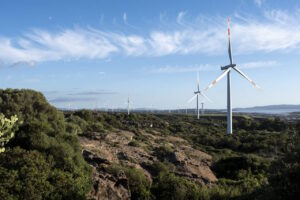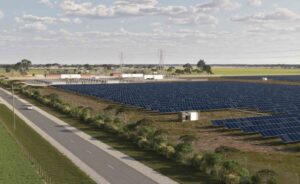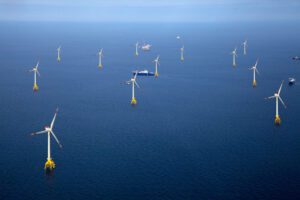The world’s first fully recyclable wind turbine blades have rolled off the production line of a factory in Denmark, ready to be installed and tested at an offshore wind farm being developed in Germany.
Siemens Gamesa announced the launch of its RecycleableBlade on Tuesday, as a “milestone” step towards its goal of making whole wind turbines fully recyclable, by 2040.
For now, the company has produced the first six 81-meter long recyclable blades at its manufacturing plant in Aalborg, ready for commercial use.
The blades look likely to make their operational debut at the 342MW Kaskasi offshore wind farm, which is in the early stages of construction in the German North Sea, as part of an agreement with developer RWE. The project is expected to be operational in mid-2022.
Siemens said it had also made deals with French company EDF Renewables and German wind project developer, wpd, both of which had agreed to install sets of the RecyclableBlades at one of their future offshore wind farms.
The production of fully recyclable wind turbine blades is a milestone for the global wind industry, which – like the solar and battery industries – has been scrambling to find sustainable end-of-life solutions to match with the enormous and escalating uptake of the technology.
As RenewEconomy explained here, it’s estimated that by 2050, 43 million tonnes of decommissioned turbine blades will reach their end of life and need to be managed through the global waste stream. Current practice in the US and Europe is to bury the blades in large landfill sites.
According to Siemens, 85% of a wind turbine is already recyclable, but the challenges have been in making up that final 15 per cent, as well as in finding cost-efficient and sustainable methods for recycling.
On the latter front, the blades have proved especially tricky to recycle efficiently, due to the fact that the standard blades are cast using glass and carbon fiber, a core material like wood or polyethylene terephthalate foam (PET), and a resin system – which binds all the components together.
The difficult part is the separation of the cured resin from the other materials in order to recycle or reuse the components once a wind turbine is decomissioned. And this is where the innovations comes in.
Siemen’s RecycleableBlades are made using a new new resin type whose chemical structure makes it possible to efficiently separate the resin from the other components at end of their working life.
This is done by immersing a used blade into a heated mild acidic solution, which will separate the resin from the fiber glass, plastic, wood and metals.
Siemens says this process works to protect the properties of the materials in the blade, allowing them to be reused in new applications, including in the automotive industry and in consumer goods like flight cases and flat-screen TV casings.
“The time to tackle climate emergency is now, and we need to do it in a holistic way,” said Siemens Gamesa CEO Andreas Nauen.
“In pioneering wind circularity – where elements contribute to a circular economy of the wind industry – we have reached a major milestone in a society that puts care for the environment at its heart.”
Sven Utermöhlen, CEO of offshore wind at RWE Renewables said the testing of the recyclable turbine blades at the Kaskasi project was “a significant step” in advancing the sustainability of the industry.
“We are pleased that our offshore wind farm Kaskasi is able to provide a fantastic facility for testing innovations; here we are preparing to test special steel collars and to use an improved installation method for foundations,” he said.










